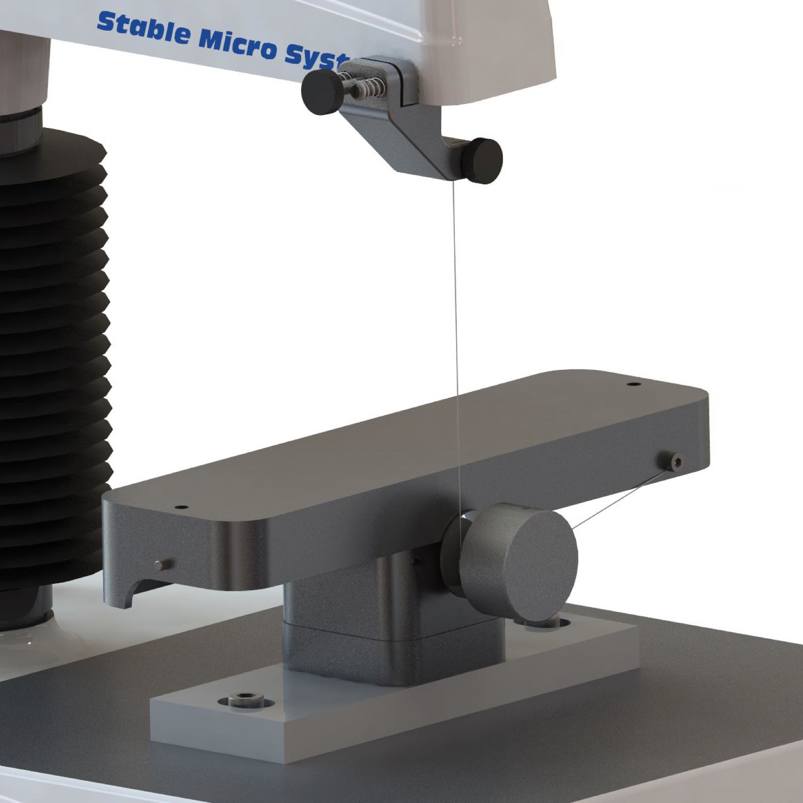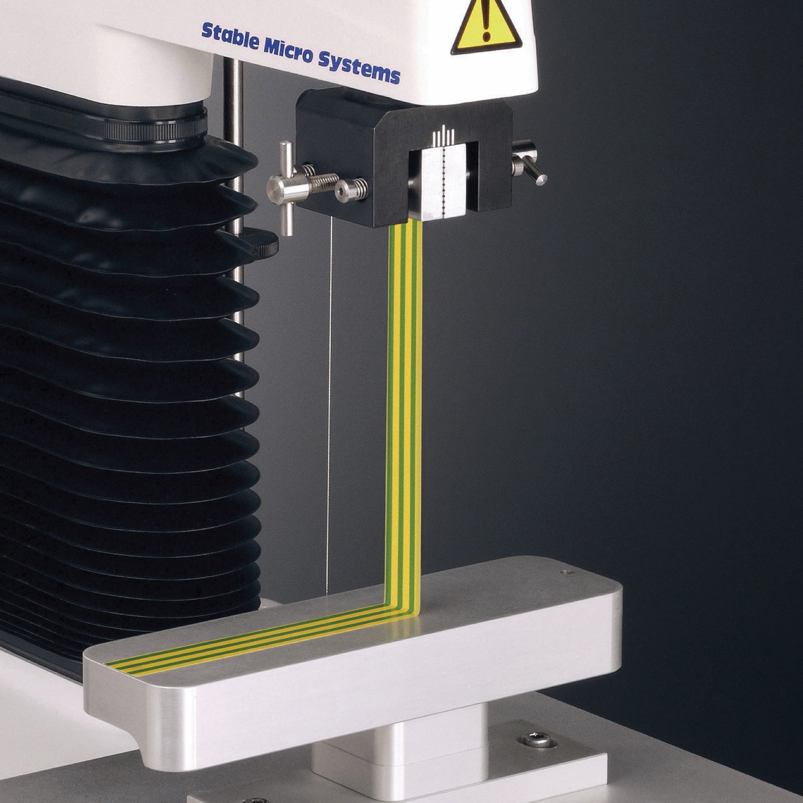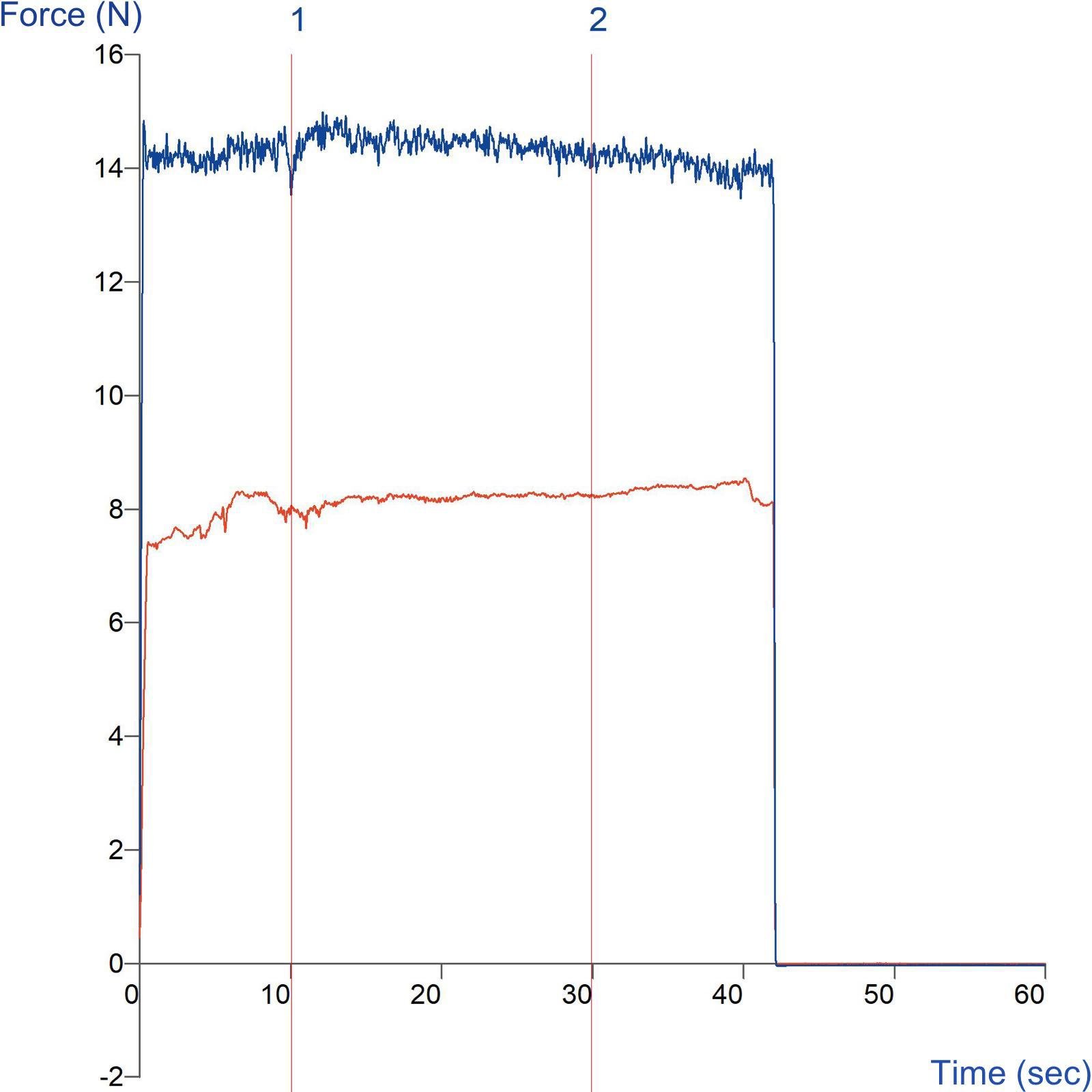Product overview
Using this device, a 90º peel angle is maintained by the use of a cord and pulley system. A strip of tape is applied to the test bed or other standard surface of interest (according to customer specifications). The tape is peeled from the panel at a 90º angle at a specified rate, during which time the force required to effect peel is measured.
The test is commonly used for quality assurance purposes where the minimum or maximum peel values expected for a particular tape can form an acceptance criterion.
Applicable Standard Adhesive Methods that use this attachment include AFERA: 4013, 4015, 5001, 5004; FINAT: Test Methods 1, 2, 3, 5, 6, 9, 18, 22; ASTM: D330/D330M, D3759M; PSTC: 4B, 8, 31, 101.
There are other attachments available that attach to this device, each of which is designed to carry out various aspects of adhesive testing.
Multi-hole Indexing Plate (A/MIP)
This plate allows ten individual adhesive tape tests to be performed on a single sample using a domical probe. The plate is moved manually to bring each sample section into position.
Flexible Substrate Clamp (A/FSC)
This device incorporates a multi-slot plate and a clamping fixture for the measurement of adhesiveness of, for example, release liner material to adhesive tapes.
Test Plate Clamping System (A/TPC)
Accommodates test panels up to 2" (50mm) wide and 8" (206mm) long exposing the panel to allow testing of standard 1" or 24mm tape widths.
Nail Polish Adhesion Rig (A/NPA)
Allows the multiple adhesive testing of from a single sample preparation of liquid samples formed to a fixed depth/thickness that typically involve a curing process.
How does the Adhesive Indexing System work?
Ideal sample form
A flexible material which can be adhered to a chosen surface and gripped at one end in order to be pulled back and pulled off the surface through 90 degrees.
Benefits and limitations
- Peel speed can be controlled and the degree of peeling kept constant
- Limited by the platform size and instrument pulling distance along with width and length of the material to be peeled
Optional extras
Flexible Substrate Clamp and Slotted Plate – A/FSC
Multi-hole Indexing Plate – A/MIP
Test Plate Clamping System – A/TPC
Technical information
Installation
Full installation instructions are provided within the Education Zone of the latest Exponent/Connect software version and on the technical information sheet accompanying this product.
Chemical compatibility
Stable Micro Systems probes and attachments are commonly made from four materials: anodised aluminium (AA6082 T6), stainless steel (316 T), Delrin (acetyl copolymer) and Perspex (polycarbonate).
In general use, probes and attachments made from these materials will be suitable for testing food products and inert non-food materials.
The four materials listed above are not universally resistant to all types of chemicals and as such the compatibility of the probe/attachment material with the product (to be tested) must be established to prevent damage to the probes and attachments. If the compatibility of the product with the probe is unknown to the customer then the chemical information about the product (Material Safety Data Sheet or Product Data Sheet) should be submitted to Stable Micro Systems. Stable Micro Systems will then assess the suitability of the probe/attachment material for use with the product and advise accordingly. If this advice is not sought then Stable Micro Systems will not accept liability for probes/attachments damaged by chemical attack from the product being tested.
Cleaning and maintenance
All probes and attachments may be cleaned in warm (or hand hot) water using a mild detergent. A soft brush may be used but abrasive cleaning aids should be avoided. Stable Micro Systems products should not be microwaved or cleaned in a dishwasher.
Screw threads should be lightly lubricated after drying using a light lubricant, e.g. petroleum jelly, mineral oil. This will aid the fitting and unscrewing of the item. Each component of a probe or attachment should be wrapped separately when stored, to avoid scratching or chipping. This will safeguard against any unnecessary damage to the accessory.



